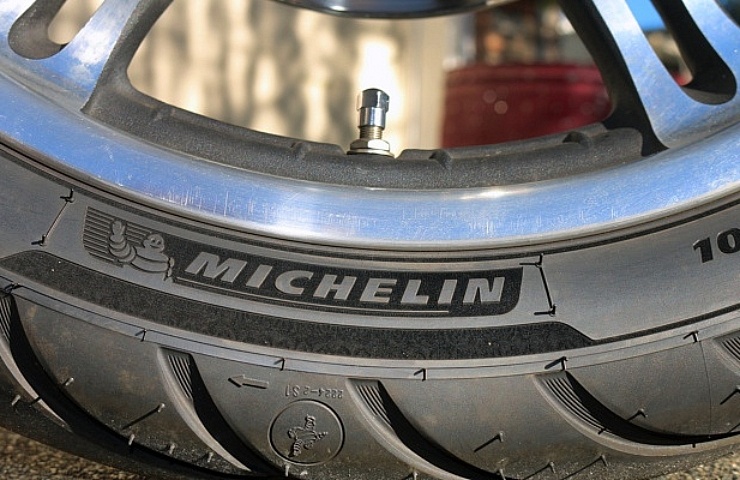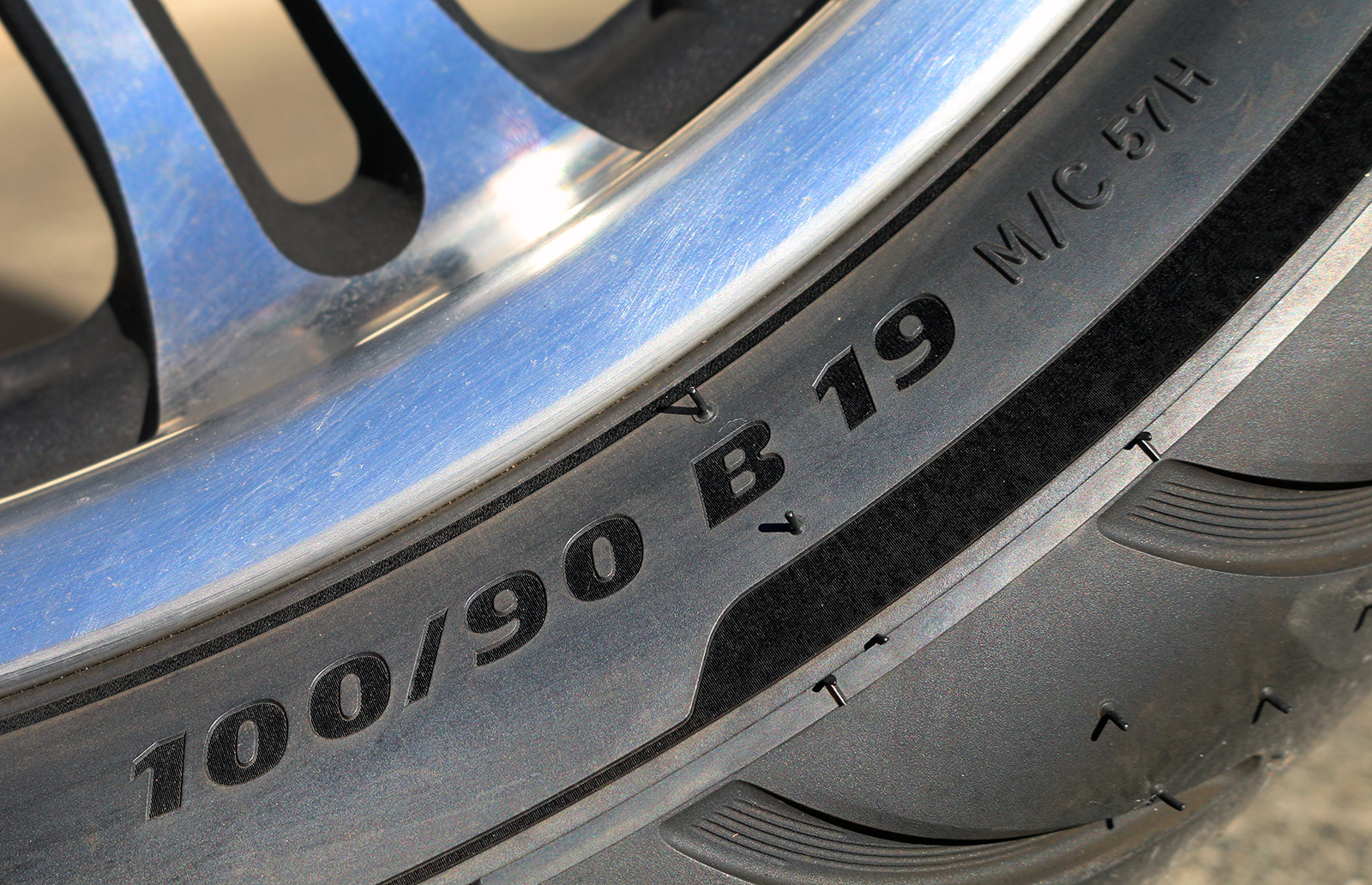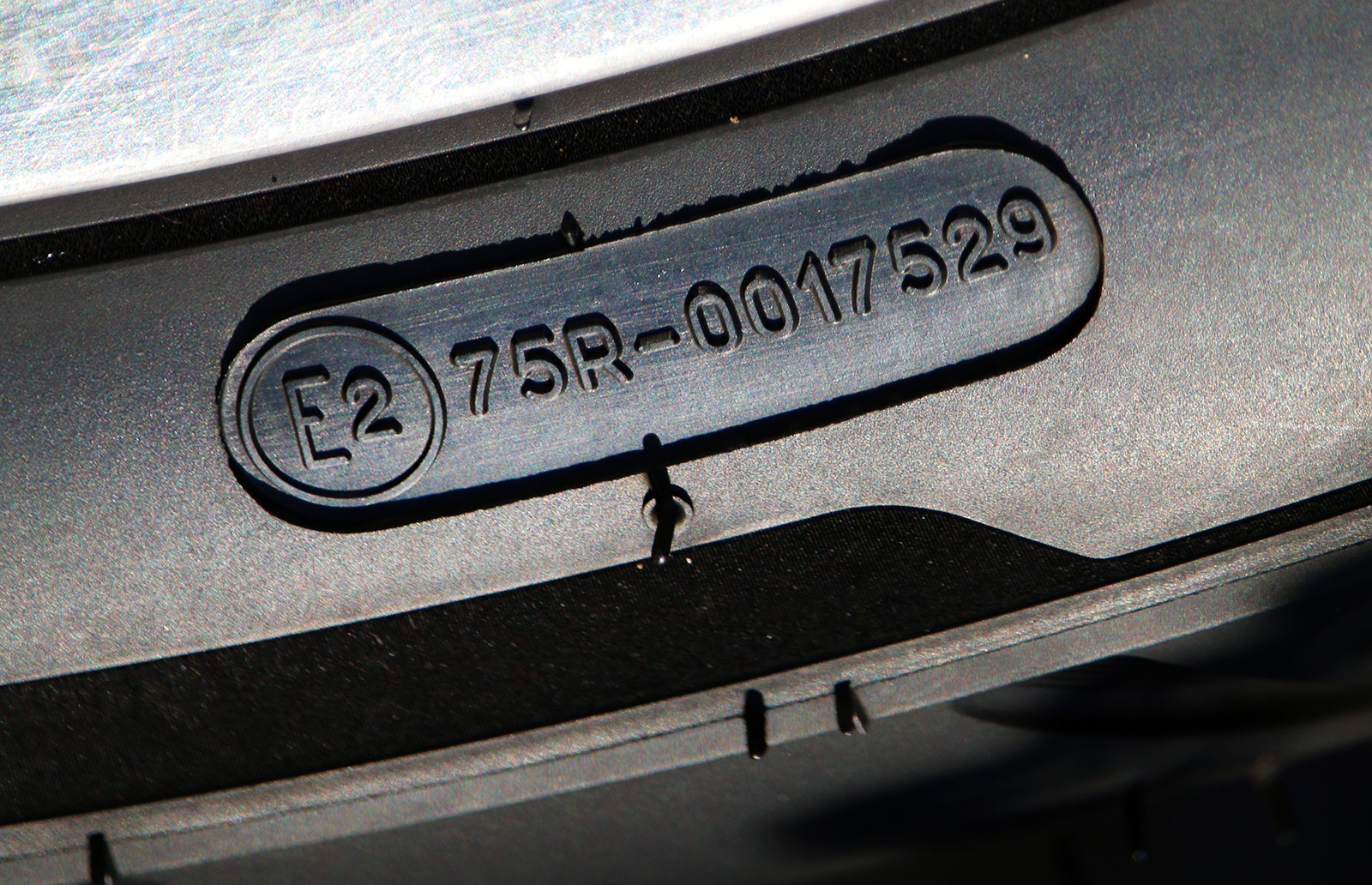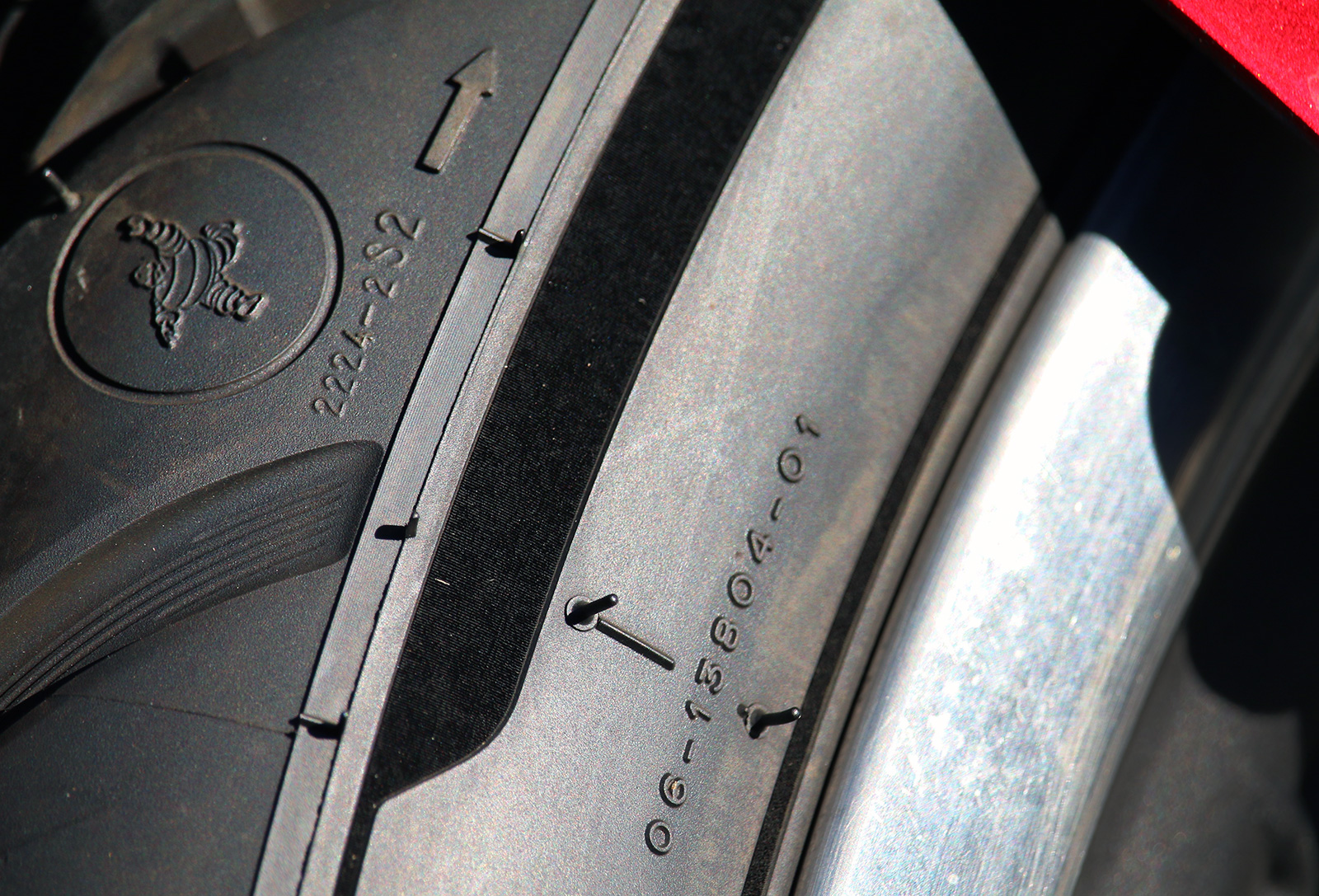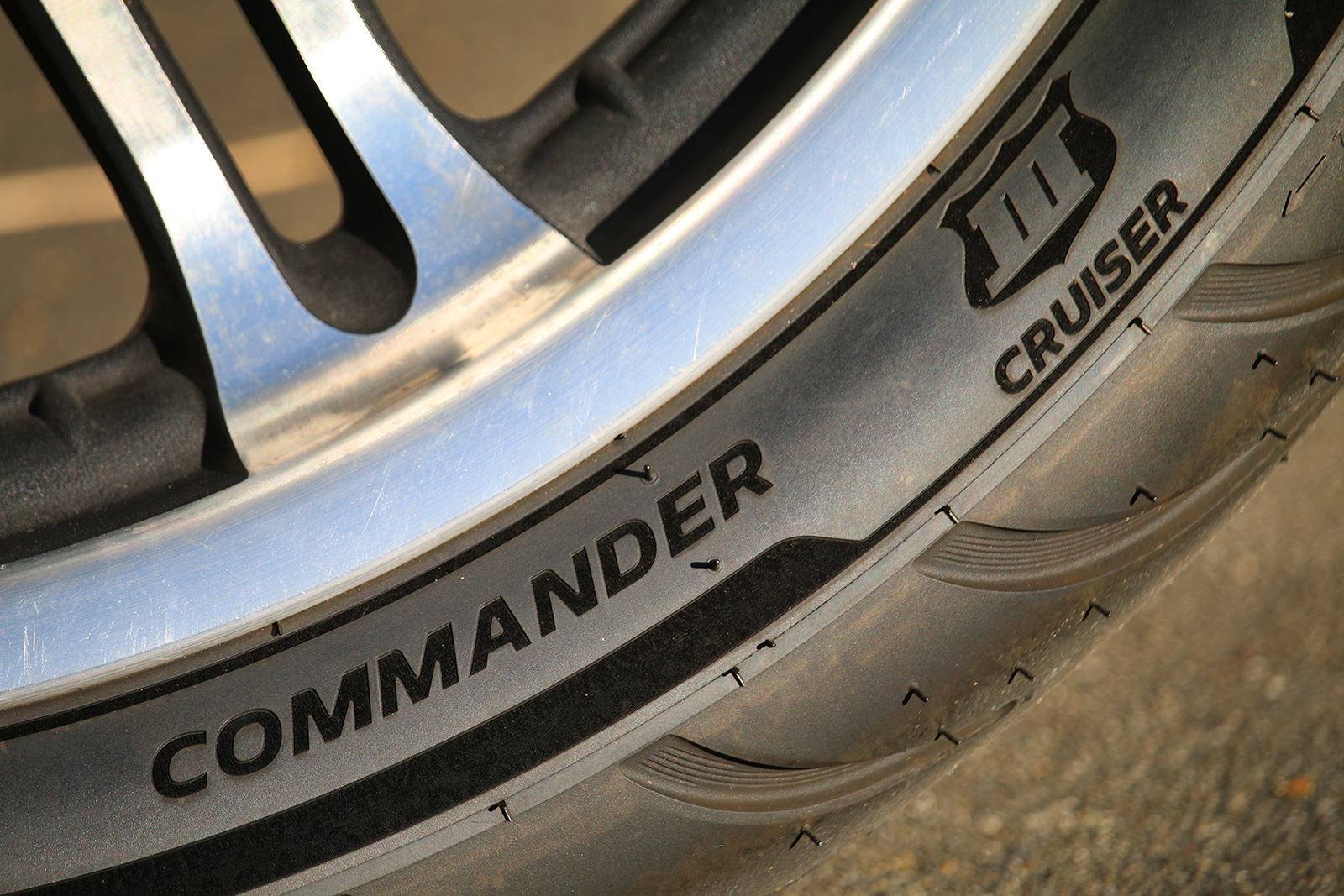Manufacturers put a ton of information on a motorcycle tire. With so many numbers and letters running along the tire’s edge, there’s a lot to decode and understand. So here’s a handy guide on how to read motorcycle tire codes —and tips to know when it’s time for new rubber.
Tire Codes for Height, Width and Rim Size
To interpret the codes for motorcycle tire dimensions, look for a distinct grouping on the side that might look something like: 180/70R-17. These numbers break down as follows:
- 180 is the tire width in millimeters.
- The second number, 70, is the height of the sidewall displayed as an aspect ratio. This means the tire’s height is 70 percent of the width (126 millimeters in this case).
- The B or R between the second and third numbers tells you if the tire is bias ply or radial. If there’s no letter, it’s bias ply.
- The last number specifies the size of the tire rim measured in inches, in this case 17.
Tire Codes for Speed, Load and Direction
The next series of motorcycle tire codes are the load index and speed rating. A big, heavy cruiser must be able to handle a heavier load, but doesn’t need the same speed rating as a superbike.
For example, if the next number in the sequence is 78, the tire has a maximum load capacity of 937 pounds, according to the tire’s load index chart. These charts are easy to find online and range from a load index of 47 (386 pounds) to 87 (1,202 pounds). It’s important to make note of these numbers; an overloaded motorcycle can be dangerous.
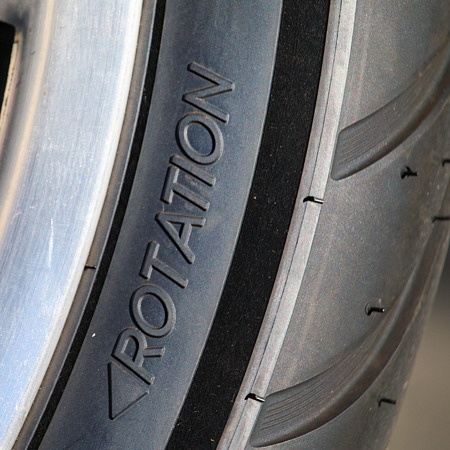
Following the speed rating and load index, you will often find the letters TL (tubeless) or TT (with a tube) in your motorcycle tire codes. Next, there may be an arrow showing tire-rotation direction, which is helpful for mounting the tire.
Codes for Tire Origin, Date and Wear
The next block of codes on your bike tire starts with the number of plies and the type of material, and indicates this critical information, in order:
- The maximum load information at a designated psi.
- The tire’s serial number.
- The date code—a string of three or four digits. If the numbers are 2621, the tire was produced in the 26th week of 2021. Manufacturers advise that motorcycle tires be changed every five years, even if a lot of tread remains.
The final bits are the manufacturer’s name, the type of tread pattern, the product line, and where the tire was produced.
When to Change Your Motorcycle Tire
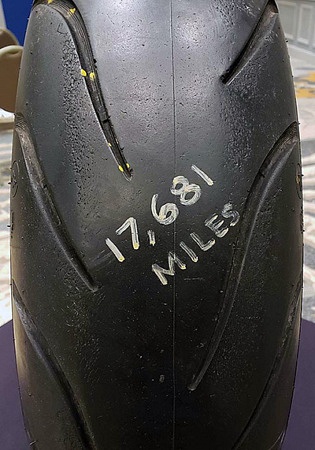
The rule of thumb states that it’s time for new motorcycle tires when there is less than 2 millimeters of tread depth. You can check this by using a penny. Stick Lincoln’s head down into a groove in the center of the tire. If you see any space above Lincoln’s head, change those babies.
Some tires also have a tread wear indicator (TWI), imprinted on the side of the tire. A triangle points to a line running across the tread. When the line reaches the top of the grooves, it’s time to replace the tire.

